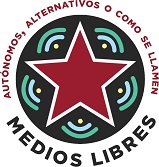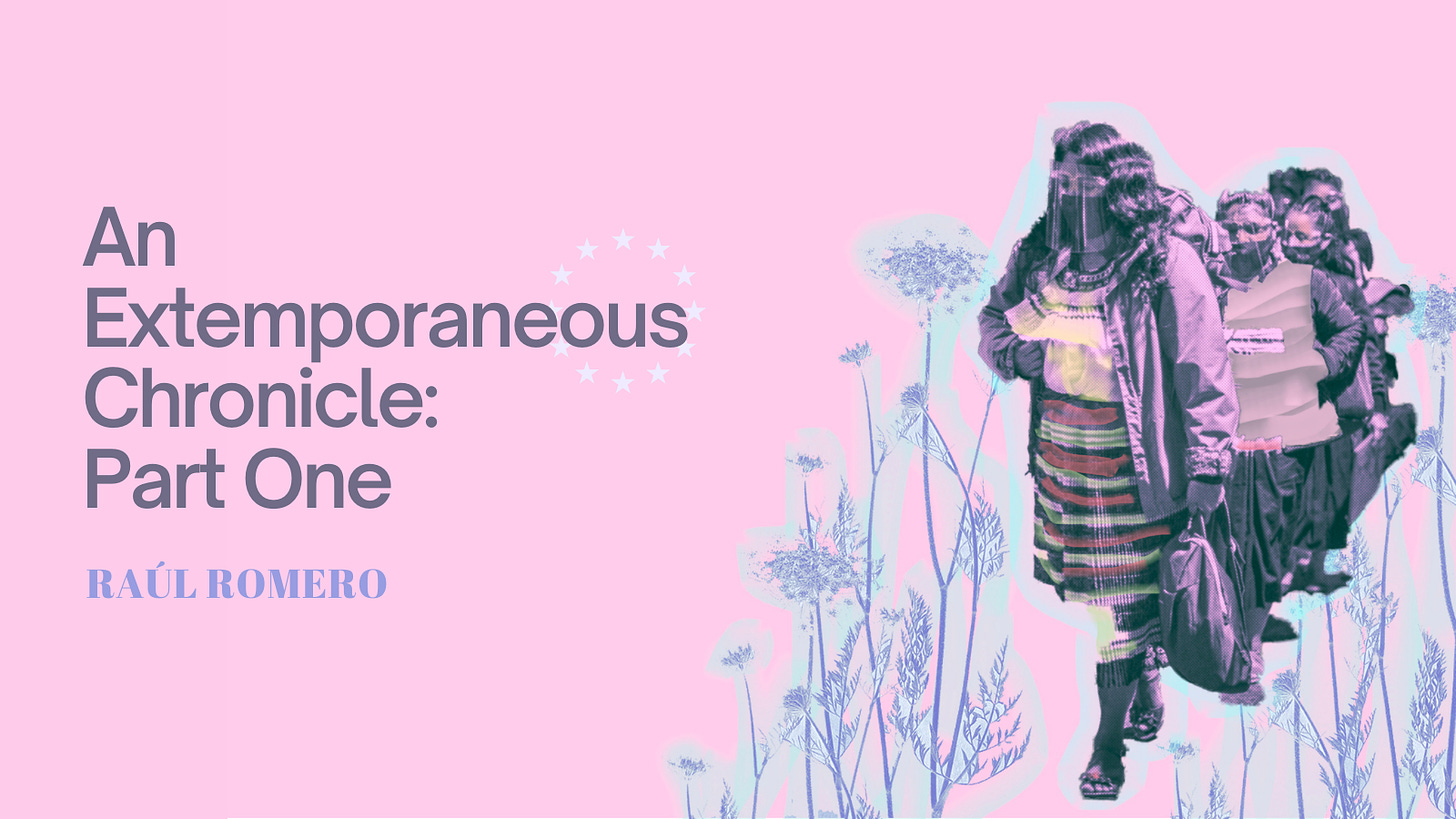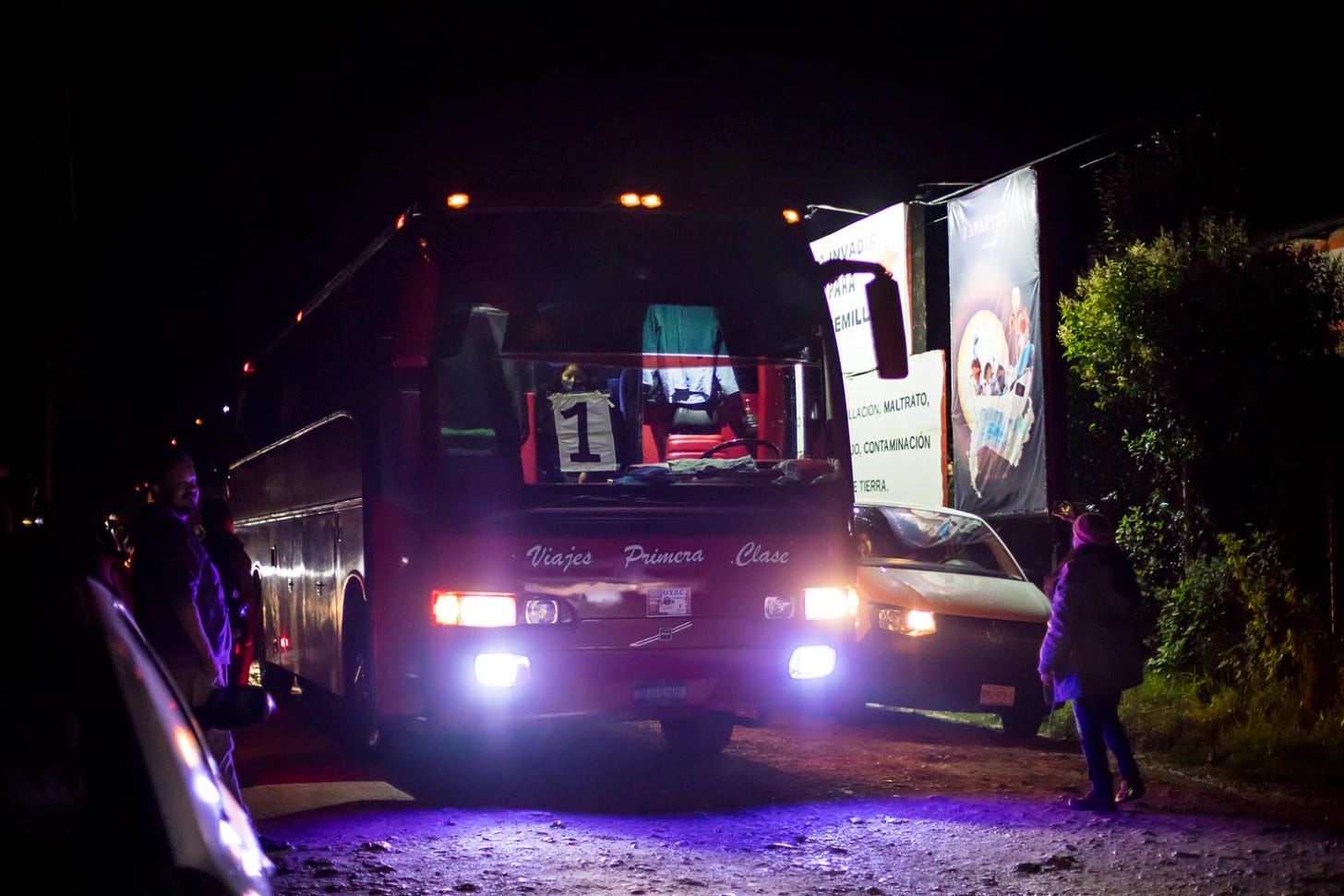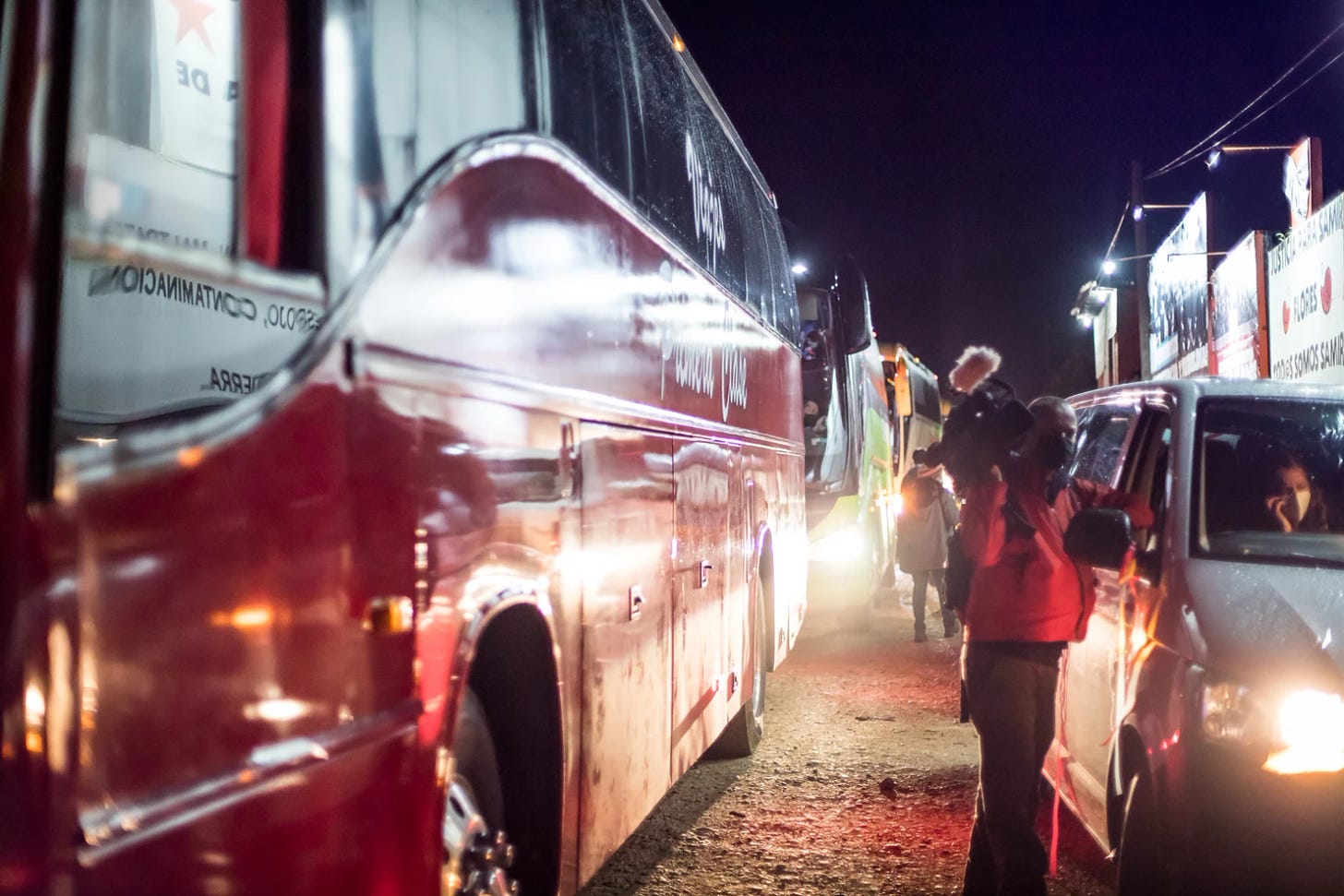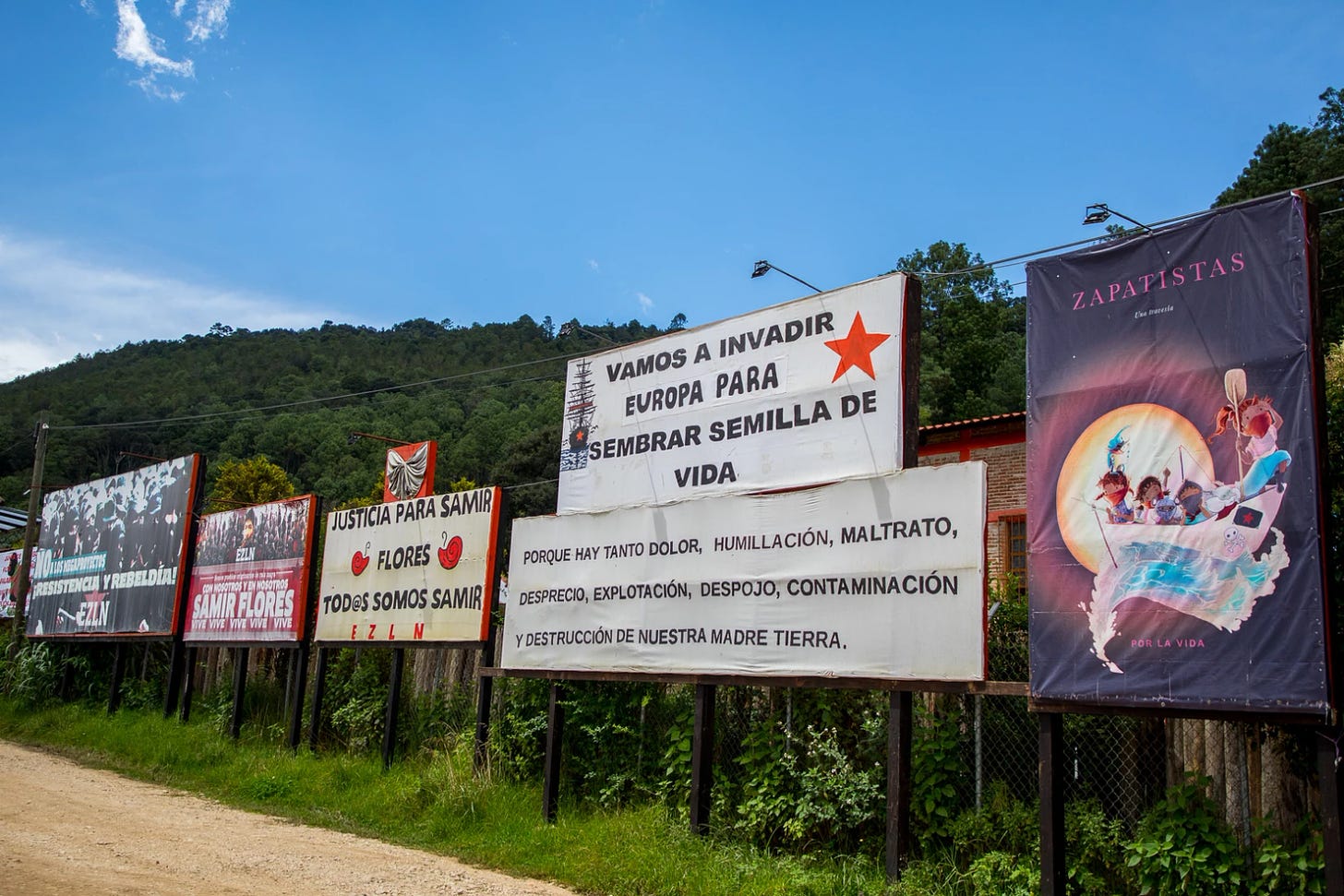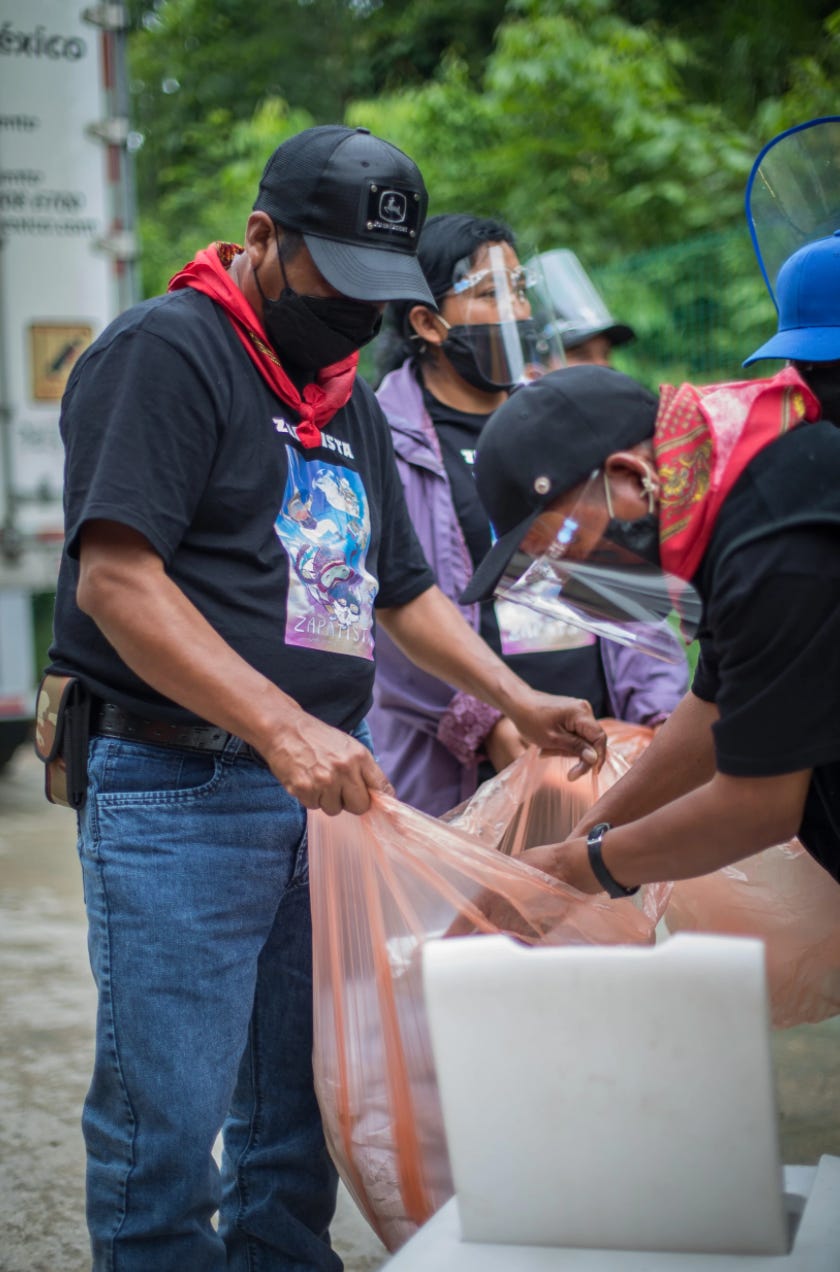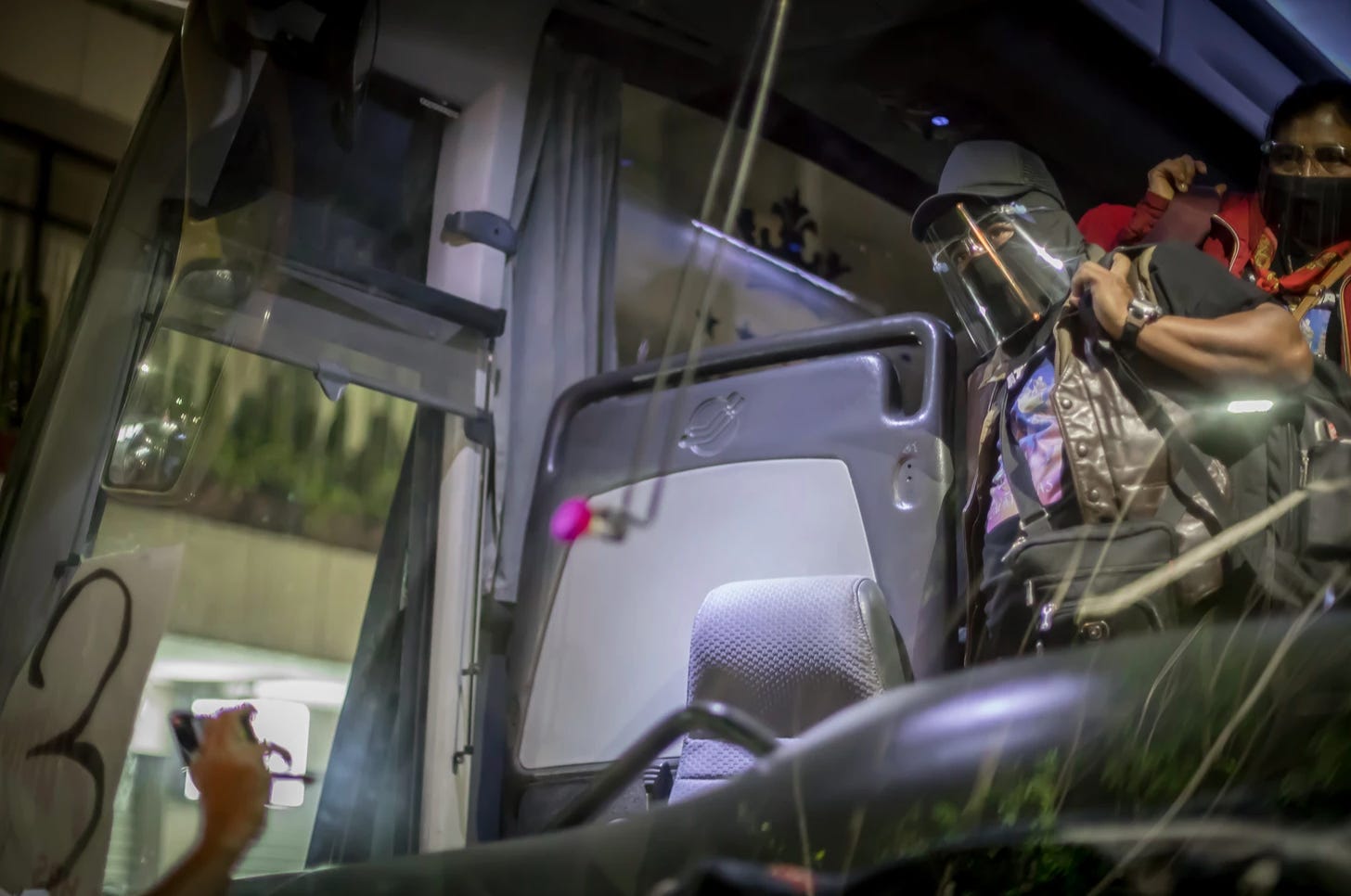An Extemporaneous Chronicle: Part One
An immersive record – as it is characteristic of Raúl Romero, describing the challenging trajectory of La Extemporánea from San Cristóbal de las Casas to Vienna, Slumil K’Ajxemk’Op’s territory.
| 1 |
By Raúl Romero.
Wednesday, September 8.
The wind farms and PEMEX compounds urge us to go faster. We don’t want night to fall on that stretch of the highway in the state of Veracruz. On other journeys we have been witness to criminal and state violence in that area. At nightfall, on this stretch of road, the commercial bus lines decide to wait for other units and travel in a caravan to support each other. Memory kicks in: “if they throw a stone at our window, don’t stop,” I tell my companion who drives the van we are traveling in. He replies: “It is not so easy, it depends on the amount of damage.” We both know that this is one of the practices used by some criminal groups to force you to stop, and then rob and/or kidnap you.
These are the things that we in Mexico have had to learn in order to be able to travel in a “more secure” way.
I finish sending the agreed message, at the agreed time, to the group monitoring us in Mexico City. I look up and a group of about ten people of African descent walks along the road. They are traveling with very few belongings and bottles of water, part of the migrant caravans that cross Mexico to reach the United States. The scene becomes commonplace. I try to keep count, but there are so many groups we encounter along the way that I have forgotten how many we have counted.
We arrive at our destination, San Cristobal de las Casas, Chiapas, at 8:30 pm. A couple of comrades are waiting for us.
We have a brief conversation, catch up. Hugs will be for another time: mouth covers, gel and disinfectant spray accompany our meeting. It’s time to rest. We have been on the road for more than 13 hours. We get settled in the space that we have been lent in solidarity to spend those two nights. In the early hours of the morning, I hear notifications of messages on my cell phone. I hear them in the distance, while dreaming.
The next day when I wake up I finally consult the phone.
“Don’t go out, there is turmoil in the village.”
“How are you? Don’t go near the north of Jovel.” These are some of the messages I read.
According to the Fray Bartolomé de las Casas Human Rights Center, the night witnessed confrontations between criminal groups in the northern area of the city of San Cristóbal de Las Casas, near the community known as Molino los Arcos.
The situation is serious: people assassinated, houses burned, terror. In Chiapas this scene has also become common: paramilitary and organized crime groups carry out constant attacks against rural and urban populations.
The municipal and state governments do not seem to be concerned about stopping this situation; on the contrary, they guarantee impunity and free mobility to these groups. The interventions of the federal government are also insufficient, or complacent depending on how you want to see it. Chiapas is a powder-keg. Its governor, Rutilio Escandón, “is kept in the government with pins” and through agreements with other power constituencies.
On Thursday the 9th, the entire day consisted of preparations and informal meetings with compañeros and compañeras from other organizations. In the morning we went to the Center of Autonomous Resistance and Zapatista Rebellion Caracol Jacinto Canek, a Zapatista caracol in the heart of San Cristóbal de las Casas. We signed up on a list and announced that we would accompany the caravan. The next day La Extemporánea, the Zapatista airborne delegation will leave for Mexico City, where they will stay for a few days and then fly to Vienna, Austria. Outside the Caracol remain people of solidarity, comrades, filmmakers, independent journalists. We share information and tips for the trip.
In the afternoon of the same Thursday we attended a seminar held by some collectives of the region. The predominant theme of the interventions was the attacks that occurred in the early hours of the morning.
They talk about organized crime, corruption, dispossession, resistance, the struggle for life, the role of women, the objective of the intensification of the war in Chiapas, the situation of terror. There is fear and uncertainty.
An older man takes the floor and maps the links between local governments and organized crime.
He concludes: “we have to ask our allies in Mexico City to help us communicate what is happening in Chiapas. If we write it, they will kill us.”
Night falls again, a reminder that we must hurry.
We distribute the tasks between the three: buy food, water, put gas in the car. My travel partners go together, and I walk through the center of San Cristobal. I adjust my mask, dodging tourists and moving away from where I see the highest concentration of people. It seems that for the hundreds of visitors the pandemic is over: they go without masks, or healthy distance, or any other measure. I meet up with three comrades who live in town, friends of many years. We find a corner and quickly catch up. Jokingly I tell them, “the pandemic is over here, isn’t it?”. Their response is similar to what I have read in the press or heard from others: “The health measures here are a disaster. Listen to what the health workers say… In the protests against AMLO a few weeks ago there were not only the compas of the CNTE, there were also women and men doctors and nurses. Many people died in the communities who were not included in the COVID statistics.”
On Friday, September 10, very early, at 6:00 am, we arrived again at the Caracol Jacinto Canek. The Extemporánea has already boarded the four trucks that will take them to Mexico City. Also on the trucks are the Comando Palomitas, the group of boys and girls who have a special mission on the trip: to play. Also on board is Después de los 17. (The Ixchel-Ramona Militia Section). A total of 177 people make up La Extemporánea. At the head of the delegation is the spokesman of the EZLN, Subcomandante Insurgente Moisés, who is also the coordinator of La Travesía por la Vida – European Chapter.
The Extemporaneous is the second Zapatista delegation to travel to Europe this year. Just last May, Squadron 421, the Zapatista maritime delegation, composed of Lupita, Carolina, Ximena, Yuli, Bernal, Felipe and Marijose, left on the ship La Montaña for Europe. After several weeks at sea, in June 2021, Squadron 421 arrived at its destination, which it renamed SLUMIL K’AJXEMK’OP, which means “Rebellious Land”, or “Land that does not surrender, that does not yield”. During its stay in Insubordinate Europe, Squadron 421 met with different organizations. It also led the historic mobilization of August 13, 2021 in Madrid under the slogan: They did not conquer us.
The caravan of vehicles is formed and begins to take its course. A filmmaker runs alongside us with his camera in hand. From the truck in front of us, half of the body of another documentary filmmaker comes out of the window: camera in hand, making funny contortions to get better shots. They both want to record this historic moment.
Several cars break away from the caravan before leaving San Cristobal de las Casas. From there we will be four trucks, five vans and one car that will make the trip.
We have already identified ourselves and we know who should go where. In Tuxtla Gutiérrez we notice that a local police patrol is following us. They take pictures of us. They speed up and get between the cars of the caravan. The same scene will be repeated in Tabasco, Veracruz, Puebla and the State of Mexico: state police patrols passing us, taking photos, closing the road.
Something similar happens with the patrols of the National Guard and the National Migration Institute. These two groups stop us on at least three occasions. The treatment is cold, aggressive. In one of the stops the situation becomes more tense than in the previous ones. Migration and the National Guard stop us at the same time. They want the compas to get out of the trucks. The human rights observers accompanying us argue the right to free transit. Migration insists. All of us accompanying the caravan surround the agents. Some of us turn on our cell phone cameras and start recording. A colleague begins to transmit live via Facebook. The agents look surprised, they don’t expect that kind of reaction. They let us go. We get back on the road.
On two separate occasions we stop for food. The Zapatista delegation is well prepared: bananas, water, tortas. They organize themselves to distribute them. Everyone always wears masks and safety face shields.
16 hours after leaving the Caracol Jacinto Canek we arrived at our destination: Carmona y Valle no. 32 in Mexico City. The location shows off the murals and ribbons that a brigade of artists had painted a few weeks earlier. Other Zapatista sympathizers have attended the reception. The large contingent from the Otomí Community residing in Mexico City stands out. The arrival is, like the departure, quick and orderly.
The Extemporaneous has arrived safely at its first destination. It is time to rest.
Published originally in Mexican-Castillian language by Camino al Andar. Part one of two, the second part to be published tomorrow.
Chronicle by Raúl Romero, photographs by Francisco Lion.
Translation by taller ahuehuete.
